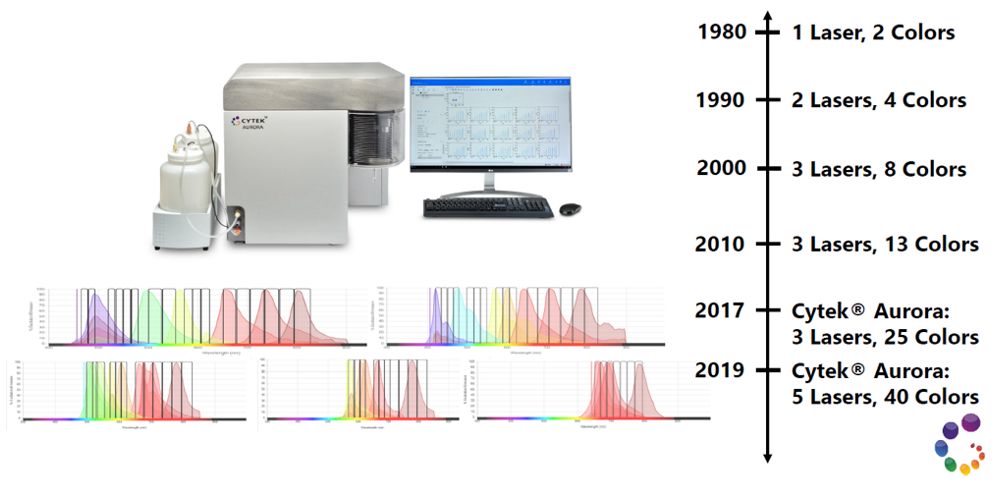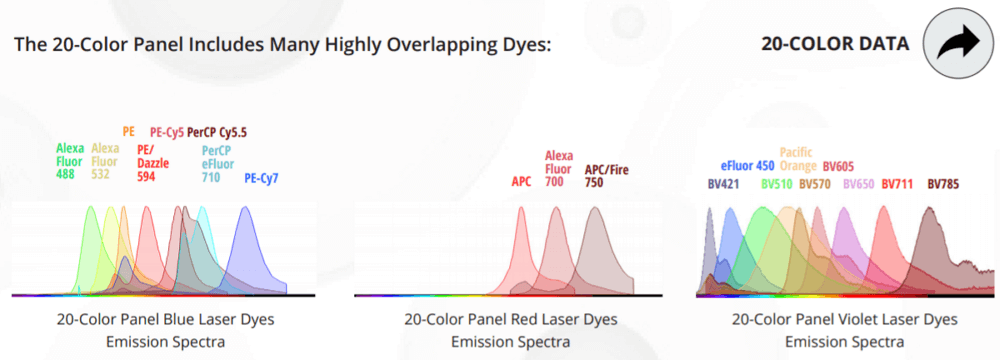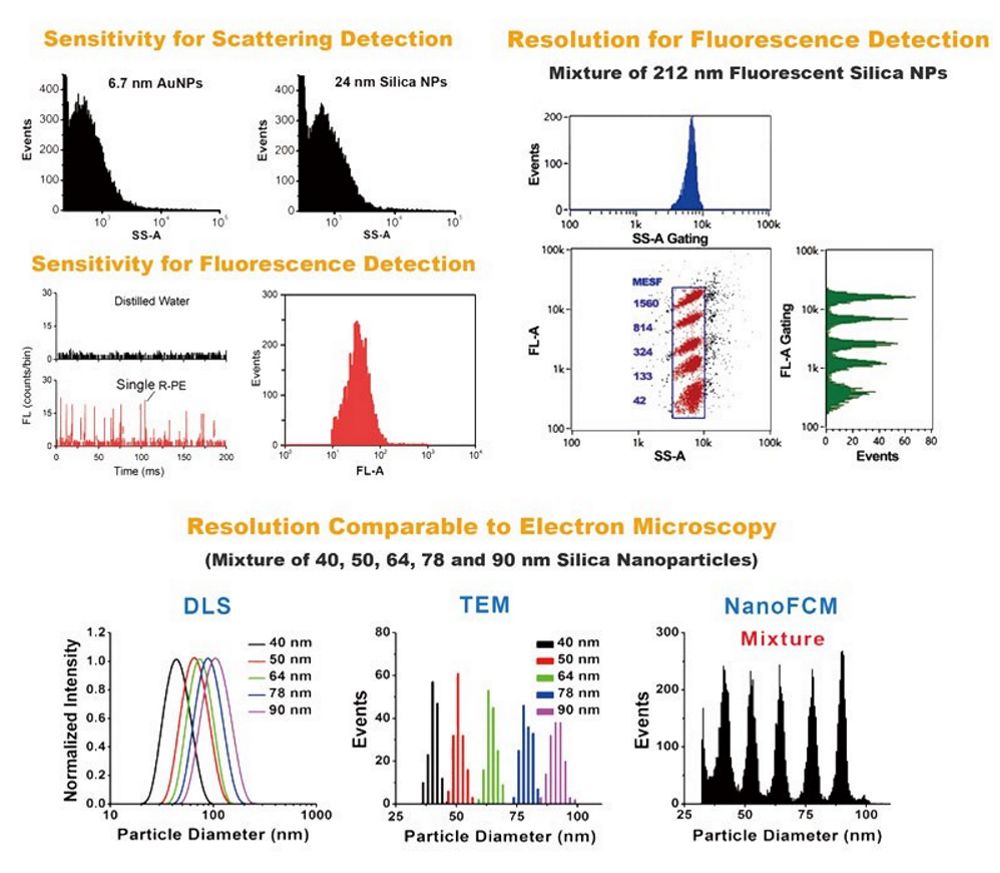Flow Cytometry
Flow cytometry is widely used technique in drug discovery, genomics, and immunoprofiling

Flow Cytometry
Flow cytometry is a widely used technique in drug discovery, genomics, immunoprofiling for analyzing the expression of surface protein and intracellular molecules, characterizing and sorting cell populations, assessing the purity of isolated subpopulations, and cell-based assays such as proliferation, cyto toxicity and cell death.
A cell suspension is passed through a flow chamber single file, through one to several lasers to detect the scattered light and fluorescence of single cells. By using fluorescently-labeled antibodies, a flow cytometer is capable of detecting and differentiating between multiple proteins of interest. When used multi-parametrically, this technique forms a “panel,” which is defined by the multiple fluorochromes spanning the light spectrum, each tagged to an analytically relevant protein target.
Applications:
- Immuno-oncology
- Infectious Diseases
- Inflammatory Diseases
Workflows:
- Cell-based Assays
- Drug Discovery
- Genomics
- Immunoprofiling
What is Full Spectrum Profiling (FSPTM) Flow Cytometry?

Conventional flow cytometers have difficulty distinguishing fluorochromes with highly overlapping peak emissions, severely limiting fluorochrome choice and multiplexing capability, leading to misinterpretation of the result.
Using FSPTM where entire emission spectrum is captured across the different modules and then stitched together to create a spectral signature that combines emission information from all excitation wavelengths , Cytek systems can detect the entire fluorochrome emission, allowing researchers to use highly overlapping dyes together, to extract autofluorescence,to run panels of up to 40 colors and beyond without sacrificing data resolution.

No longer limited by the conventional peak emission bandpass filter paradigm, researchers can now visualize the full spectrum characteristics of each fluorochrome across each laser line, look for new spectrally unique reagents to integrate into continuously expanding panel designs and get more results in one experiment.
Cytek’s experience in designing highly multiparametric panels has led to a deeper understanding of how fluorochromes react together in increasingly complex fluorescent experiments. Using this expertise, Cytek developed and launched the new cFluor reagents, optimized for use in full spectrum panels.
Top applications:
- Cell Signaling and Signal Transduction
- Immunophenotyping
- Cell Sorting
- Cell Cycle Analysis
- Cell Apoptosis
- Cell Proliferation
Expanding a 7-Color Panel to 20 Colors

The optical design combined with the unmixing capability in SpectroFlo software allows you to easily expand panels. The 3 laser configuration provides outstanding multiparametric data for a wide array of applications.
Expanding to 20 Colors: A 20-color panel preserving the original 7-color assay is summarized in the table below. Reagents shared by the 7-color and 20-color panels are shown in bold.


Nano Flow Cytometry for Exosomes (Extracellular Vesicles)

Nano-sized extracellular vesicles (EVs) released by various cell types play important roles in a plethora of (patho) physiological processes and are increasingly recognized as biomarkers for diseases. Moreover, engineered EV and EV-inspired liposomes hold great potential as drug delivery vehicles. EVs are heterogeneous in composition and size, ranging from approximately 30 to 1000 nm, with the vast majority <200 nm in size. As determined by their biogenesis, the three main classes of EVs are exosomes, microvesicles, and apoptotic bodies. In contrast to microvesicles, which are generated by budding from the plasma membrane, exosomes are derived from the endolysosomal pathway and fall in the size range of 30-150 nm.
EVs released from different cell types (and even from a single cell type) are shown to be highly heterogeneous in size and nanostructure, a specific vesicle subtype could be solely responsible for a particular function. The function of EVs are typically evaluated on RNA level (qPCR) and protein level (ELISA, IF, Western blots). However, these ensemble-averaged techniques could not discriminate the distinct subset from other abundant EVs. Therefore, a sensitive, specific, and rapid methodology is urgently needed to measure the abundance of these specific markers on EVs at the single-particle level. However, the tiny size, heterogeneity, low refractive index as well as lacking distinct markers make it extremely challenging for the single-particle analysis of EVs.
The gold standard for nanoparticle measurement has been electron microscopy (EM), which can determine both the size and morphology of the particles. However, the sample preparation steps and imaging techniques require dehydration, chemical fixation and/or staining of the biological specimens, which may alter the morphology of the samples. While for biological particles like EVs, cryo-electron microscopy (cryo-EM) is used to preserve the natural morphology of particles. But its routine application is prohibited due to the extremely high price and limited statistical power.
NanoFCM provides a versatile and powerful platform — Flow NanoAnalyzer for the multiparameter analysis of individual extracellular vesicles (30-150 nm in diameter), the fluorescence of single phycoerythrin molecules can be well detected against the background. The Flow NanoAnalyzer platform enables quantitative and multiparameter analysis of single EVs down to 40 nm, which is distinctively sensitive, yet high-throughput, and shows great potential in liquid biopsy applications.
Flow NanoAnalyzer is expected to become a powerful tool for life science, nanoscience and nanotechnology studies. Flow NanoAnalyzer can be used for the multiparameter characterization of natural and synthetic nanoparticles (7-1000 nm) at the single-particle level, such as extracellular vesicles, mitochondria, bacteria, viruses, nanomedicine and naonomaterial. Combining light scattering and fluorescence detection, high-resolution distributions of particle size and biochemical properties can be acquired simultaneously in 1-2 minutes.
Subscribe now
Stay updated with the latest news and offers





